#orion refractor
Explore tagged Tumblr posts
Text

Old school hand drawing / rendering of the Orion Nebula, 2nd March 2018. 6" Skywatcher refractor and 10" Grubb Parsons Perseus.
10 notes
·
View notes
Text

Well, that worked pretty well for an 88% waxing moon with the ZWO ASI071MC color camera. The near-full moon and Jupiter at opposition were just far enough away to make this set up work--plus a lot of 5-minute exposures. That band of red at the top left is the tail end of the ridge of hydrogen that runs behind the Horsehead Nebula (B33). Imaging notes: 63 x 300-second subs, no filters with the ZWO ASI071 color camera cooled to 0C, William Optics RedCat 15 Apo refractor, Sky-Watcher EQ6-R Pro mount. The Orion Nebula (M42), Running Man Nebula (Sh2-279), De Mairan's Nebula (NGC 1982,M43), and surrounding nebulosity.
More of my astro stuff here: https://SaltwaterWitch.com
32 notes
·
View notes
Text


The Great Orion Nebula M 42
This is my 1st capture of a DSO using a Nikon D850, February 2023
Equipment used: William Optics FLT 132 f/6.9 Triplet APO Refractor with a William Optic ZenithStar 61 II Doublet Refractor as a guide scope with a ZWO 178mm guide camera.
I’m please with the results. Unfortunately, the image isn’t as good as it could be. Perhaps next time I’ll use a filter to bring out the color that is missing.
2 notes
·
View notes
Text
Night sky highlights for February 2024
Check out the night sky this month, February 2024. Here are videos and articles highlighting the top sights to observe. ** What's Up: February 2024 Skywatching Tips from NASA - NASA JPL What are some skywatching highlights in February 2024? Venus begins its exit from the morning sky, as Mars makes its comeback. Plus, now through May is a good time to observe spiral galaxy M81. 0:00 Intro 0:13 Moon & planet highlights 1:45 Observing spiral galaxy M81 4:01 February Moon phases Additional information about topics covered in this episode of What's Up, along with still images from the video, and the video transcript, are available at https://science.nasa.gov/skywatch.... https://youtu.be/iDAKTLmt2hs ** Tonight's Sky: February 2024 - Space Telescope Science Institute - Tonight's Sky In February, the Winter Triangle is your guide to the night sky: The northern hemisphere is treated to views of the stars Procyon, Sirius, and Betelgeuse. Keep watching for the awe-inspiring space-based views of the Orion Nebula, which is sculpted by the stellar winds of central bright stars. ... “Tonight’s Sky” is a monthly video of constellations you can observe in the night sky. The series is produced by the Space Telescope Science Institute, home of science operations for the Hubble Space Telescope, in partnership with NASA’s Universe of Learning. This is a recurring show, and you can find more episodes—and other astronomy videos—at https://hubblesite.org/resource-galle.... https://youtu.be/0eGB8NApTwo ** What to see in the night sky: February 2024 - BBC Sky at Night Magazine Pete Lawrence and Paul Abel reveal what to see in the night sky tonight and throughout February, including the best comets, clair-obscure effects on the Moon, Orion, Gemini and star clusters. 00:00 Intro 00:13 Mercury, Venus and Mars 02:23 Jupiter and Saturn 03:41 Uranus and Neptune 06:22 Comets 11:25 Einstein Crater 13:34 Lunar X and V, Jewelled Handle 15:31 Orion 16:30 Castor and Pollux 17:50 M35 19:05 Ursa Major 20:15 Leo and the Sickle 22:00 Beehive Cluster 23:06 M67 25:08 Hydra https://youtu.be/fjeGLX3I5aI ** Sky & Telescope's Sky Tour Podcast – February | The Winter Hexagon and Constellations Near Orion - Sky & Telescope Youtube Our monthly Sky Tour #astronomy #podcast provides an informative and entertaining 10-minute guided tour of the nighttime sky. Listen to the February episode and keep tabs on the Moon, say goodbye to a couple of planets, trace out the Winter Hexagon; and explore some lesser-known constellations near Orion. So bundle up, grab your curiosity, and come along on this month’s Sky Tour. https://youtu.be/xE3f1R0wIGk See also - Sky Tour Astronomy Podcast: Upcoming Celestial Events - Sky & Telescope - The Best Comets in 2024 - Sky & Telescope ** What's in the Night Sky February 2024 Venus Mars Conjunction | SpaceX Starlink - Alyn Wallace https://youtu.be/A9uf3LuCzLA ** Night Sky Notebook February 2024- Peter Detterline What's happening in the sky in February 2024 when you look up! https://youtu.be/nos3yHbgQX4 ** See also: - Night Sky Map for February 2024: Orion, the Hunter | Almanac.com - February 2024 Night Sky Calendar | Voyageurs Conservancy - What's in the Sky This Month? | High Point Scientific - The Night Sky in February 2024 | Day By Day Astronomy Events - 4 Must-See Events in the February Night Sky (2024) | SpaceTourismGuide.com - February 2024 night sky: The snow moon, leap year and bright Orion | The Washington Post === Amazon Ads === Celestron 70mm Travel Scope Portable Refractor Telescope Fully-Coated Glass Optics Ideal Telescope for Beginners BONUS Astronomy Software Package == Stellaris: People of the Stars Read the full article
0 notes
Text
Are you Looking Best Telescopes For Viewing Planets And Galaxies
Are you interested in viewing planets and galaxies and finding the best telescopes to help you view galaxies? We've examined everything from entry-level examples to state-of-the-art instruments, including refractors, reflectors, catadioptric telescopes such as Maksutov-Cassegrains, and indeed a wide range of other types, including the recently acquired Smart Telescope.Here is the list of Best Telescopes For Viewing Planets And Galaxies
1. Sky-Watcher SkyMax 180 Pro Maksutov
2. Celestron Astro Fi 5 Schmidt-Cassegrain Wi-Fi System
3. Orion StarSeeker IV 150mm Mak-Cass Telescope
4. Explore Scientific Carbon Fibre 127mm Triplet Apo Refractor
5. Sky-Watcher Evostar-90 AZ Pronto Telescope Mount
6. Meade Series 6000 115mm Apo Refractor
7. Ishtar 150mm F12 With Moonlite Focuser
8. Celestron Advanced VX 9.25 Schmidt-Cassegrain System
9. Meade LX 200 8-Inch Telescope
10. Celestron CPC Deluxe 1100 EdgeHD Schmidt-Cassegrain
0 notes
Photo

Finally a clear night for imaging! 4 hours of exposure data throughout the night. I was up until almost 4am making sure I didn't waste a rare clear night here in the bayou!
Western Veil Nebula aka The Witch’s Broom, part of a large supernova remnant 1470 light years away. Astronomers think it happened between 3 and 6 thousand BC.
#western veil nebula#veil nebula#ngc 6960#myphotos#orion refractor#zwo#asi1600mm-cool#astronomik#custom scientific#backyard astronomy#neq6#nebula#stars
9 notes
·
View notes
Photo

First light with the William Optics Zenithstar 61II, only 7 subs of 30s each (3200iso).
Sony a7III, SkyWatcher Star Adventurer, Optolong L-eXtreme filter.
Waiting for clearer skies...
#william optics#zenithstar#61#astro#astronomy#refractor#apod#orion nebula#orion#m42#space#deepspace#astrophotography
47 notes
·
View notes
Text
Reflector, Refractor or Compound: Which Telescope Fits Your Budget?
Reflector, Refractor or Compound: Which Telescope Fits Your Budget?
Last year we were asked to house sit for a couple whom live on an acreage away from the city and all its city lights. Every night after sunset I would take a walk through the front yard and ponder at the glorious night sky. This is when I caught the bug to start researching and locating my first telescope. As it turned out my first telescope was a Celestron Travel Scope 60mm and it turned out to…

View On WordPress
#Astronomy#Celestron#common types of telescopes#Compound#Dobsonian#Jupiter#newtonian#Orion&039;s Belt#Pegasus#reflector#refractor#road trips#summer camping
0 notes
Text
The Great Orion Nebula
The Great Orion Nebula SvBony 48p 500mm Refractor CPWI/Starnet++/Photoshop 2.5 hours total of successfully stacked exposure 1 minute per Image ISO 800 A new way to do it with SV48p Every astrophotographer is an artist!!❤️❤️

46 notes
·
View notes
Text
Second Star to the Right

I grew up fascinated with the cosmos, thus my major obsession with sci-fi shows and movies (especially Star Trek). It all started when I got my first telescope when I was a kid. It was a small, red refactor telescope (don't remember the lens size but it was pretty small). It didn't have much power, but it was very fun to use. I didn't know what to focus on when I was using it, so I mostly looked at the mountains in the distance, some bright stars at night but still didn't quite know how to search for things in the sky.
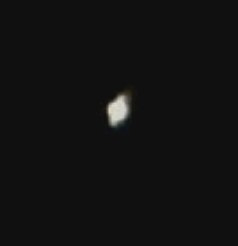
It wasn't until I got my 2" reflector telescope that I could start to see some better objects in the sky. That is when I first saw the Orion Nebula through a telescope for the first time. I didn't know what I was looking at at first, since it was so blurry and very dim through the telescope. But I knew I was looking at Orion in the sky and roughly in the location of where the nebula should have been, so I knew it was it. It was so fascinating to see..and ever since, I have been fascinated with the night sky, becoming an amateur astronomer from that point on. I pulled out this telescope every chance I got to look at things with my friends and family and any astronomical event that came my way.

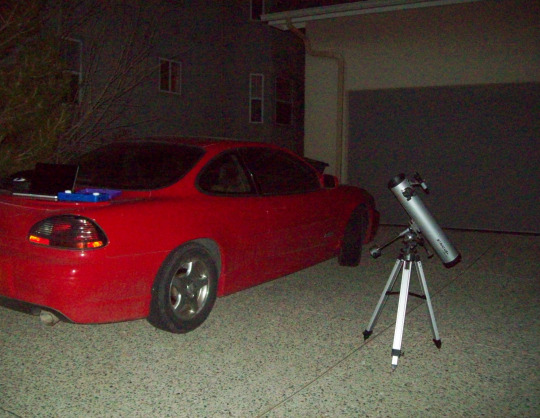

I went onto college, where they had a student campus observatory. This observatory had an Astronomy Club (which I later became president of, and Angie, the vice-president) that would operate this facility, which included a 20" dobsonian/reflector telescope, multiple 13"/14" reflectors for portable use and in a dome with CCD imaging and a Takahashi refractor telescope in a dome with CCD imaging. I was able to see so many things in the sky with these telescopes and I cherish the time I had there to make use of these instruments to see my dreams come true of seeing the vast galaxy around us up close. I was able to learn how to use the CCD imaging telescopes to take so many pictures through the Astronomy Lab that the university offered, and I took many pictures to caputure these objects in the sky.
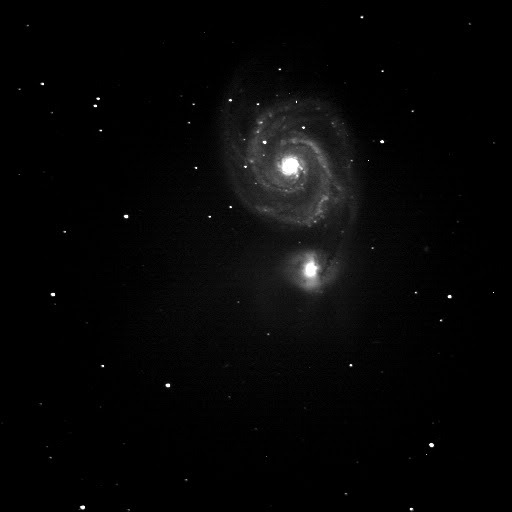
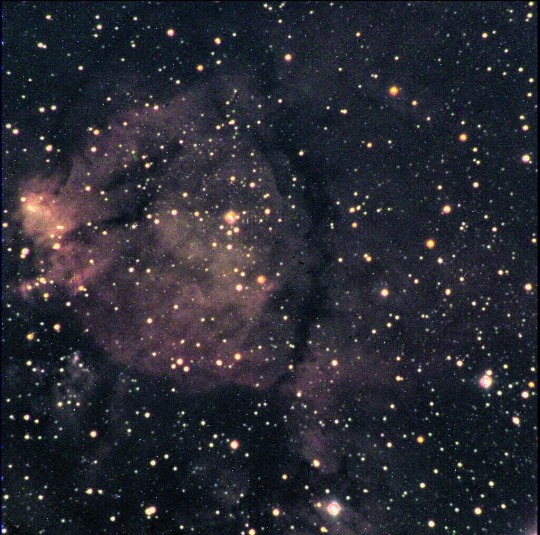

Although I don't have a telescope anymore, I have astronomy mode on my Pixel phones (started with the Google Pixel2 XL, and now currently Google Pixel 5) and have much enjoyed its capabilities to take many pictures around me to capture beautiful shots of the night sky!
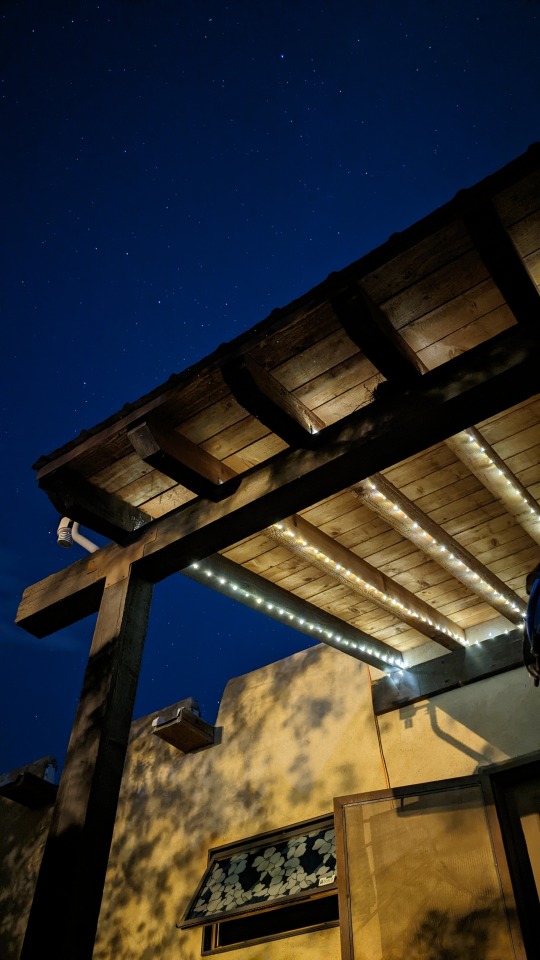
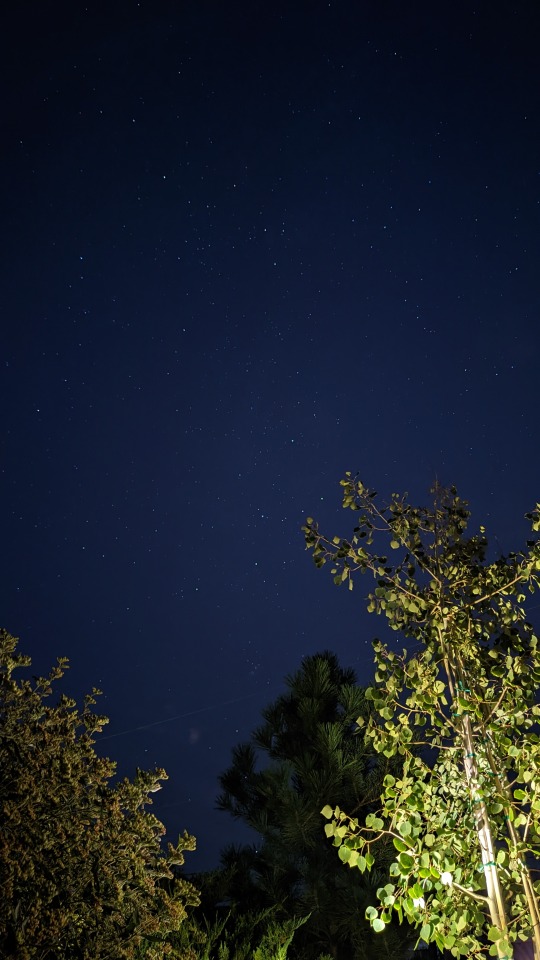


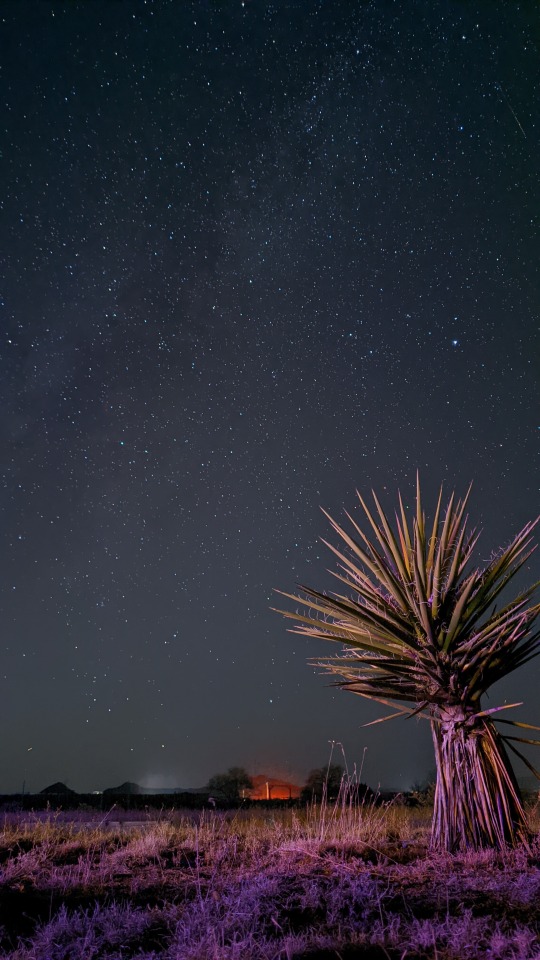
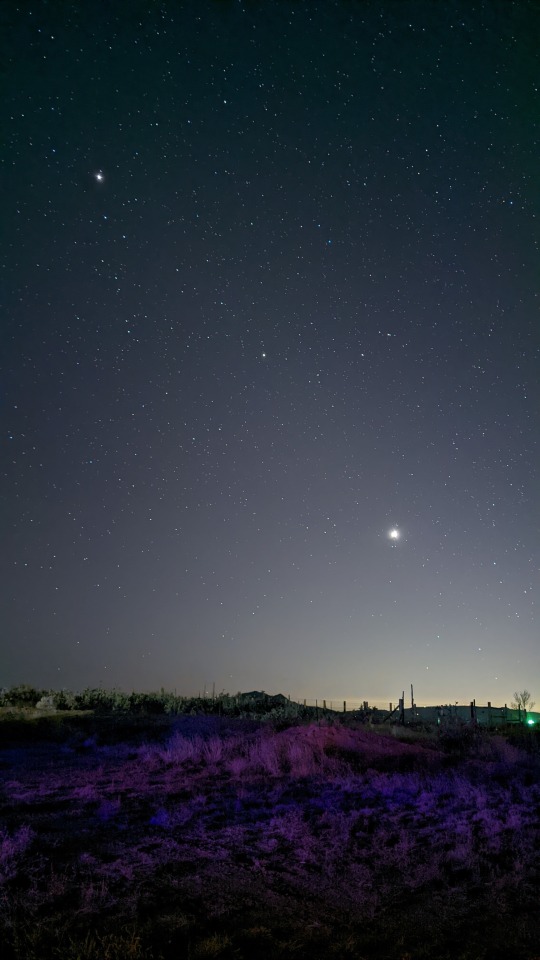
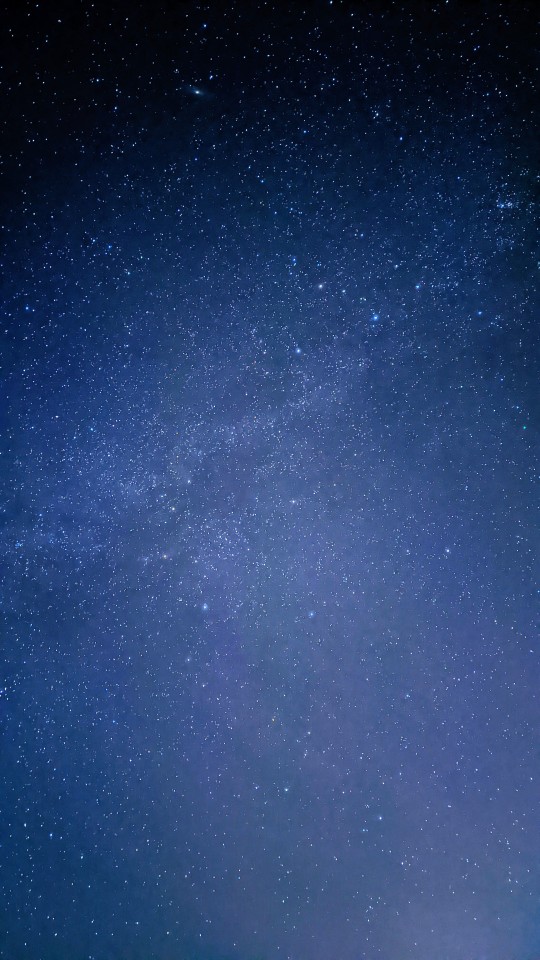
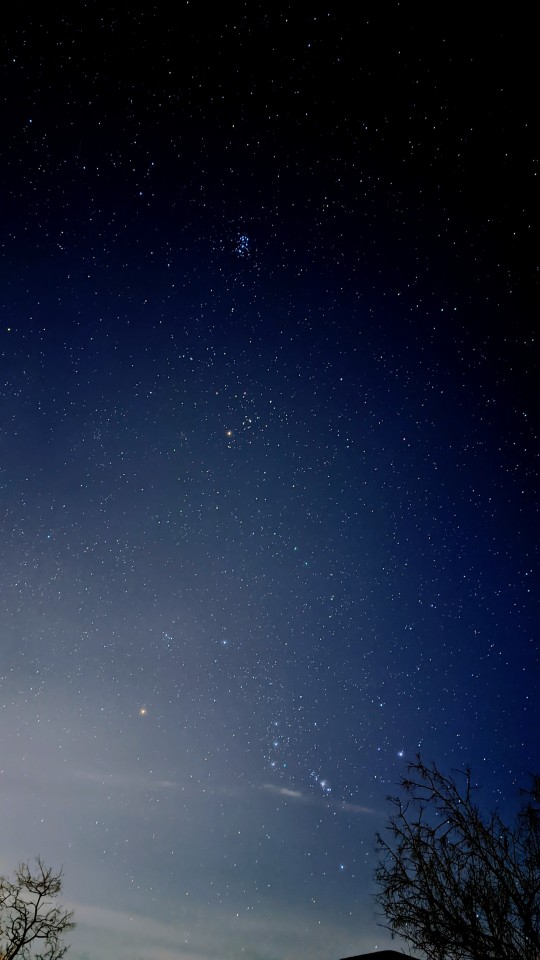
Here's to hoping I can get a telescope again in the future and take even better shots of all of these!
Until then!
Hello World! Live long and prosper 🖖and keep the rhythm alive!
4 notes
·
View notes
Text
Progress on the Orion Nebula.

Late 2017, early 2019, early 2020, and finally early 2022.
The first one was with a phone clamped to the eyepiece, single 10-second exposure. 4.5" Newtonian scope with a bit of a kludge for a drive motor. All of the others were with a 4" refractor.
The next two were with a planetary camera (small 1/3" sensor, only 1.2 megapixels), but I don't remember how much data I collected. Of these, the earlier one was done on a mount that only had a drive motor to cancel the earth's rotation for tracking. The later one was with a new-to-me goto mount that I was having a hard time figuring out.
The last one was with a proper deep sky camera (1" sensor, 20.2 megapixels), but only about half an hour of data - though I'd learned a few tricks to get the most out of my imaging software and camera while in the field. Same goto mount as the previous attempt, but I'd figured out the mount's foibles and wasn't really having much trouble with it anymore.
3 notes
·
View notes
Text

Orion Core in hydrogen-alpha: two-panel mosaic of Orion's Belt, the Horsehead Nebula, and M42, the Orion Nebula--and everything going on around these. This is a big chunk of space and the center of the Constellation Orion. The three bright stars in a line on the left is Orion's Belt. ZWO ASI2600MM-Pro, 3nm Ha, William Optics SpaceCat51 Apo refractor. My astro stuff here: https://SaltwaterWitch.com
22 notes
·
View notes
Text
Mars and the Moon, October 4, 2020


With Mars at its closest approach to Earth in 15 years (technically tomorrow night) - the brightest star-like object in the night sky - and the Moon big and beautiful nearby, I had to do a little astronomy.
(These are one-shot images taken with a Canon EOS T6i DSLR camera mounted to an Orion Skyview Pro 100mm f/9 apochromatic refractor - essentially a clock-driven, 900mm telephoto lens.)
Mars shines vivid red from just after sunset when it rises, and rises almost overhead at 1am. In last night's clear, dry, still sky, through a telescope the Red Planet reveals lots of detail to the naked eye. Looked best using a 9mm eyepiece (100× magnification).
These photos give some idea. I don't yet have an eyepiece-projection adapter for my camera, so an image of a smallish object at prime focus needs a lot of zoom during editing (hence the pixellation). These are four of the better images, ISO 100 for 1/30th to 1/60th second.
But the nearby Moon is really large without additional magnification, so higher resolution. That photo is at ISO 100 for 1/30th second. It's a bit over-exposed, because the finder screen shows images lots dimmer than they end up (note to self).
Think I'll give it another go tonight or tomorrow. Do yourself a favor and watch our neighbor planet swing its closest to us until 2035!
37 notes
·
View notes
Text
Night sky highlights for January 2024
Check out the night sky this month, January 2024. Here are videos highlighting the top sights to observe. ** What's Up: January 2024 Skywatching Tips from NASA - NASA JPL What are some skywatching highlights in January 2024? The year kicks off with the Quadrantid meteors, and some great Moon-planet pairings. Plus, did you know the stars shift in the sky by four minutes each day? 0:00 Intro 0:15 Quadrantid meteor shower 0:54 Moon & planet highlights 2:12 4-minute-per-day rule 3:46 January Moon phases Additional information about topics covered in this episode of What's Up, along with still images from the video, and the video transcript, are available at https://solarsystem.nasa.gov/skywatch.... https://youtu.be/R-TOoGTvFL8 ** Tonight's Sky: January 2024 - Space Telescope Science Institute - Tonight's Sky In January, the northern hemisphere features beautiful views of Capella, a pair of giant yellow stars; Aldebaran, a red giant star; and two star clusters—the Hyades and the Pleiades. Keep watching for the awe-inspiring space-based views of the Crab Nebula, the remains of a star that exploded as a supernova. https://youtu.be/qcVQNYkRSwI ** What to see in the night sky: January 2024 - BBC Sky at Night Magazine Pete Lawrence and Paul Abel reveal the top things to see in the night sky this month, including the planets of the Solar System, clair obscur effects on the Moon, Comet 144P/Kushia and Orion. 00:00 Intro 00:16 - Mercury 01:17 - Venus 02:57 - Jupiter 06:23 - Saturn 07:02 - Uranus and Neptune 09:16 - Comet 144P/Kushida 10:42 - Quadrantid meteor shower 11:09 - Clair obscur effects 11:49 - Galilean moons 12:14 - Mare Orientale 14:20 - Dione transits Saturn 17:37 - Sirius 20:40 - Orion 24:35 - Monoceros 25:54 - Rosette Nebula https://youtu.be/m2zdFM1gVg8 ** Sky & Telescope's Sky Tour Podcast - January | The Quadrantid Meteor Shower and Spotting Planets - Sky & Telescope Youtube Our monthly Sky Tour #astronomy #podcast provides an informative and entertaining 10-minute guided tour of the nighttime sky. Listen to the January episode and watch one of the year’s better #meteor showers, then take up the challenge of spotting five #planets; size up a celestial queen with an ego problem; and learn about a celestial hunter who, uh, also has an ego problem. So bundle up, grab your curiosity, and come along on this month’s Sky Tour. https://youtu.be/hNV2qZS5dMk See also - January Podcast: A Busy Start to 2024 - Sky & Telescope - Sky at a Glance | Recent Astronomy News & Night Sky Events - Sky & Telescope - Sky Tour Astronomy Podcast: Upcoming Celestial Events - Sky & Telescope ** What's in the Night Sky January 2024 - Quadrantid Meteor Shower | Mercury-Mars Conjunction - Alyn Wallace 00:00 Intro 00:36 Quadrantids 01:35 Northern Hemisphere Sky 02:31 Southern Hemisphere Sky 03:20 Planets and Moon 04:34 #WITNS Winners https://youtu.be/f7o-k9dXMag *** 2024 Unmissable Night Sky Events! - Alyn Wallace 00:00 2023 00:34 Aurora Boost 01:30 January 02:40 February 02:53 March 03:40 April 06:01 May 06:35 June 07:12 July 07:25 August 07:57 September 08:25 October 10:22 December https://youtu.be/TKIxtaJ4vKg ** Night Sky Notebook January 2024 - Peter Detterline https://youtu.be/r5zv--iwI6Q ** See also: - Sky This Month: January 2024 | Astronomy.com - January 2024 Night Sky Calendar | Voyageurs Conservancy - Tonight's Night Sky: January 2024 | Visible Planets, Bright Stars, Astronomy | The Old Farmer's Almanac - Night sky highlights - January 2024 | Royal Museums Greenwich - January's Night Sky Notes: Connecting the ‘Dots’ with Asterisms | NASA Science - During 2024: - 9 spectacular night sky events to see in 2024 | National Geographic - Top Astronomy Events for 2024 | Universe Today - A guide to the solar system's planets in 2024 | Space.com - 2024 Astronomy Calendar | Astronomical & Celestial Events | High Point Scientific === Amazon Ads === Celestron 70mm Travel Scope Portable Refractor Telescope Fully-Coated Glass Optics Ideal Telescope for Beginners BONUS Astronomy Software Package == Stellaris: People of the Stars Read the full article
0 notes
Text
Best Telescopes For Viewing Planets And Galaxies
n order to observe planets and galaxies through a telescope, it is important to select the appropriate instrument that meets your observing requirements. For planet viewing, a telescope with a long focal length and a higher focal ratio is generally recommended. These characteristics allow for detailed and close-up views of planets, such as Jupiter and Saturn, which may appear small but are quite bright in the night sky. Telescopes specializing in high magnification and visual resolution are ideal for observing planets. Here is a list of the top 10 best telescopes for viewing planets and galaxies:
Sky-Watcher SkyMax 180 Pro Maksutov: This telescope offers a long focal length and high focal ratio, providing detailed and close-up views of planets.
Celestron Astro Fi 5 Schmidt-Cassegrain Wi-Fi System: Considered the best telescope for viewing planets, galaxies, and other celestial objects, this portable telescope features a Wi-Fi system that enables wireless control through a smartphone or tablet, making it convenient for on-the-go observing sessions.
Orion StarSeeker IV 150mm Mak-Cass Telescope: Designed for serious stargazers, this telescope incorporates a GoTo computerized tracking system, automatically locating and tracking celestial objects for easier observation of planets, stars, and galaxies.
Explore Scientific Carbon Fiber 127mm Triplet Apo Refractor: This high-quality telescope is suitable for medium to advanced users. It includes a triplet apochromatic lens that delivers clear and crisp images with minimal chromatic aberration. The telescope's carbon fiber construction ensures a lightweight yet durable design.
Sky-Watcher Evostar-90 AZ Pronto Telescope Mount: Featuring a compact and lightweight design, this telescope offers a 90mm aperture size, providing clear and bright views of celestial objects.
Meade Series 6000 115mm Apo Refractor: Tailored for advanced astronomy enthusiasts, this telescope boasts a 115mm aperture, allowing for clear and bright views of planets and deep-sky objects.
Ishtar 150mm F12 with Moonlite Focuser: Designed for advanced astronomers seeking high-quality views, this refractor telescope features a 150mm F12 configuration.
Celestron Advanced VX 9.25 Schmidt-Cassegrain System: Ideal for intermediate to advanced astronomers, this robust telescope is perfect for observing deep-sky objects and planets.
Meade LX 200 8-Inch Telescope: This Schmidt-Cassegrain telescope offers exceptional optical performance with its large 8-inch aperture.
Celestron CPC Deluxe 1100 EdgeHD Schmidt-Cassegrain: Geared towards professional astronomers, this high-end telescope incorporates advanced features and 11-inch EdgeHD optics, delivering high-quality and aberration-free views of celestial objects.
1 note
·
View note
Video
M101_April2017_HomCavObservatory by homcavobservatory Via Flickr: M101 is a face-on, grand design spiral galaxy lying approximately 21 million light-years from Earth. Containing the equivilant of 1 trillion solar masses, it spans about 170,000 light-years from edge-to-edge. Fairly large, it appears over 28 arcminutes in diameter in our sky (i.e. approximately the size of the full moon), and can be found in the constellation of Ursa Major. Often referred to as the Pinwheel galaxy, it shares that moniker with the galaxy M33 in Triangulum. The attached image is via our wide-field imaging system and covers over 3 degrees (i.e. 6 full moons) in width, with North at left. Several other smaller and fainter galaxies can found near M101's; to it's lower right is the round galaxy NGC 5474, to it's upper left the edge-on spiral galaxy NGC 5422 and to it's lower left and just discernible in this image are NGC 5473, 5485 & 5486. Taken by Jay Edwards at the HomCav Observatory in Maine, NY while out shooting the most recent comets on the morning of April 19th using an Orion ED80T CF Triplet Apochromatic Refractor connected to a 0.8x Televue field flattener & focal reducer, CamRanger, IPad and Canon 700D DSLR; and guided by an Orion StarShoot autoguider connected to a Celestron 80MM short tube refractor; all riding on an Orion SkyView Pro goto mount guided by PHD, this image is nearly full frame and has been resized down here to HD resolution and the bit depth lowered from 16 to 8 bits per channel to reduce the file size.
#omCav#Observatory#M101#grand#design#face-on#spiral#galaxy#Ursa#Major#Orion#ED80T#apochromatic#refractor#Canon#700D#DSLR#CamRanger#Ipad#SkyView#Pro#PHD#Starshoot#astronomy#astrophotography
49 notes
·
View notes